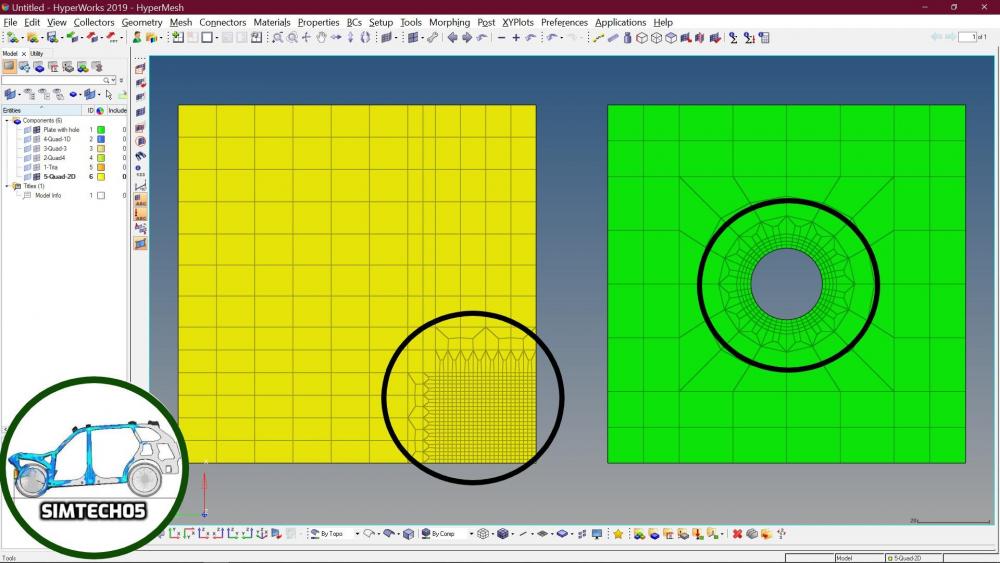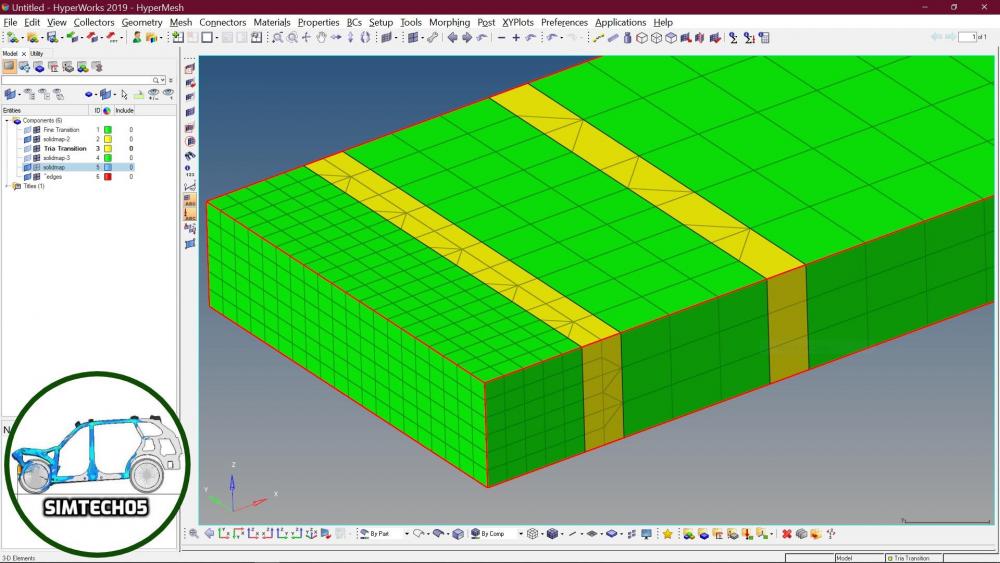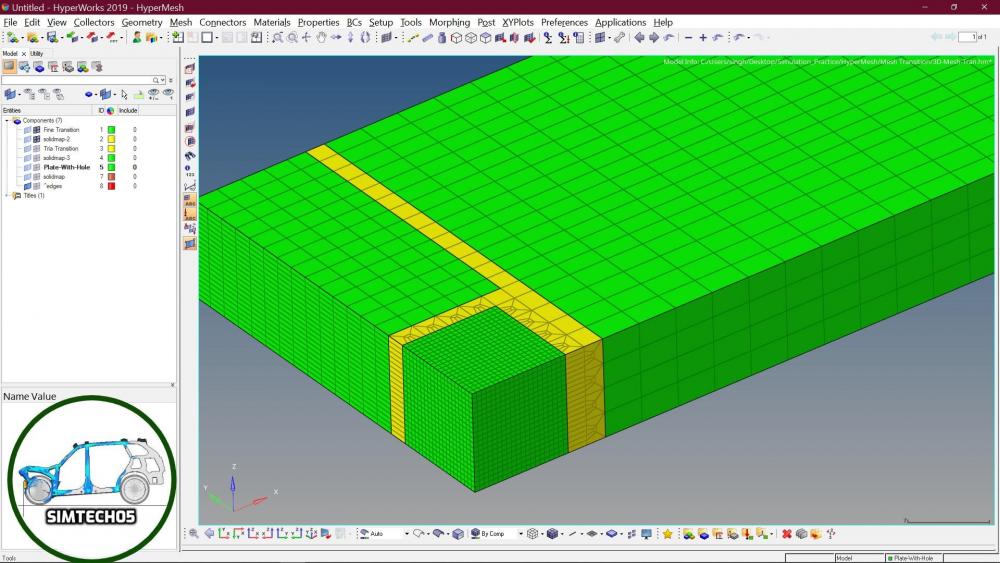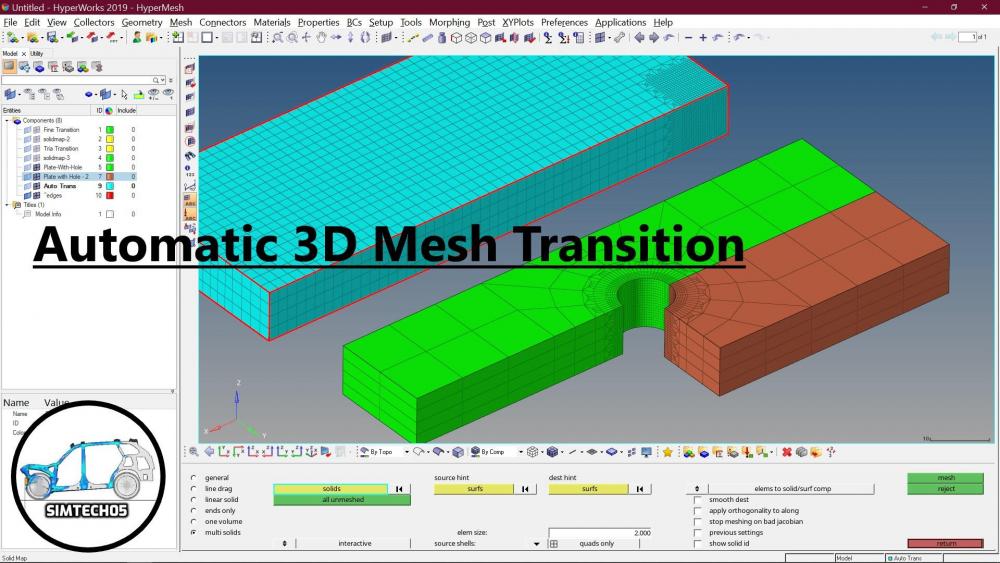Refinement using hex elements for 3D mesh
Hello everyone,
Would anyone know how to produce a 3D mesh that has a refinement region like the one shown in the image? I could only manage to produce something like this by creating the surfaces and having tetra or mixed elements inside the volume using the Volume tetra panel.
Is it possible to fill the volume using hex/quad only elements? Solid map panel does not work as the number of elements on the coarse side does not match the number of elements on the fine side.
Thank you in advance!
Answers
-
I don't think you can do this meshing with current release of Hypermesh.
In our modern world, if you can not go directly from A->B, you can go A->C->B
/emoticons/default_smile.png' srcset='/emoticons/smile@2x.png 2x' title=':)' width='20' /> Is there alway an alternative solution:
- I have a powerful supercomputer, so I don't care about the size of mesh. Instead of refine a small area, I refine whole part (yes! I know, this is not ecological!)
- I use another solver who accepts a mixte meshing with HEX/PENTA/TET/PYRAMID
- etc....
Who know when Altair Hypermesh can have this meshing feature?
0 -
I think I will go for the second bullet
/emoticons/default_smile.png' srcset='/emoticons/smile@2x.png 2x' title=':)' width='20' />
thank you for the instant reply!
0 -
Hi,
This feature is available in HyperMesh.
Kindly make use of the Mesh Refinement Tool as explained in the attached document.
0 -
Dear Mr. Chandrashekhar,
I manage to make use of this feature on shell elements but not for solid 3D elements. Is there something I am missing?
For clarification I am attaching screenshots of a solid cube I tried to refine which was firstly meshed with hex elements using solid map. I get the following error message: 1 zones failed at nodes '8268' which is the 0,0,0 node in the centre of the cube.
Thank you in advance.
<?xml version="1.0" encoding="UTF-8"?>
0 -
Yes, in 2D meshing it's simple. But not in 3D world!
It's really a mathematical 'headache' for programmers.
0 -
There is no direct option available but one can utilize existing options. I explained the same in the videos link below -
Will help to learn 2D and 3D mesh transition technique.
-
 https://youtu.be/9Z_7Syy2PkA
https://youtu.be/9Z_7Syy2PkA -
 https://youtu.be/sQzEeTU-WBI
https://youtu.be/sQzEeTU-WBI -
 https://youtu.be/PNH_5CcCbZI
https://youtu.be/PNH_5CcCbZI -
 https://youtu.be/qcMG__nZJj8
https://youtu.be/qcMG__nZJj8
<?xml version="1.0" encoding="UTF-8"?>

<?xml version="1.0" encoding="UTF-8"?>
 0
0 -


